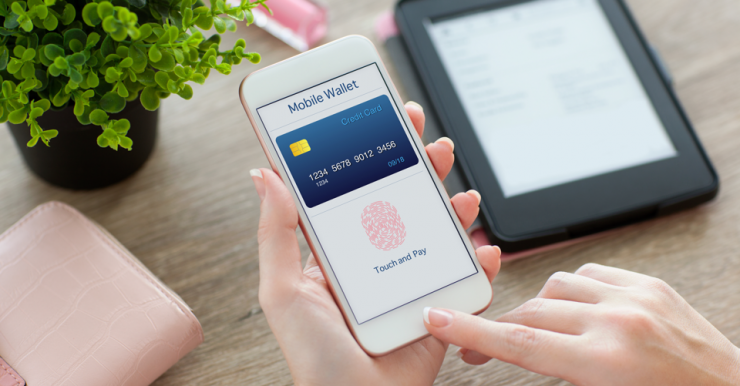With the rise of the modern phone comes the rise of more convenient methods of payments known as mobile wallet point-of-sale payments. With smart devices having overtaken computer adoption in 2014, the mobile market is one of the largest in the world, with over 2 billion users.
Payments using mobile wallets are known as contactless transactions. These use mobile apps that communicate wirelessly with compatible payment terminals owned by the merchant. The user selects what payment method they’d like to use in their app then activates the wireless payment.
Three types of methods can be used in mobile wallet payments. The most common is the NFC chip which transmits a wireless signal with financial information. A user simply holds their mobile device up to the terminal and the transaction is made. This is actually the same method used by credit and debit cards that have wireless payments enabled.
The other two methods are QR codes and Bluetooth-based payments which any smart device should be able to use. QR codes work by allowing the payee to scan a code using their device and completing the payment using an app. Bluetooth works much like NFC but may be slightly slower.
This sector, however, is growing at an increasing rate. The total amount of transactions using mobile payments in 2016 totaled over US$74,000 million. This is compared to just under $5,000 million in 2014. By 2018, that figure will be over $300 billion and over $745 billion in 2020. This shows an annual growth rate of 78 percent over the course of four years. The growth of this sector cannot be ignored.
In 2016, there are around 200 million people using mobile payments. By 2020, that number will more than double, increasing to over 450 million people. Even the amount spent per user will increase. In 2014, this figure was only around a $100 and $380 in 2016. Again showing the phenomenal growth of this sector, by 2020, the amount a single person spends using mobile payments will average over $1,600.
Read also: Compelling Features Customers Expect in E-Commerce Mobile Apps
The biggest market share is the 25-34 year-old market segment, which lead the pack with nearly 70 million users in 2016. This number will grow to nearly 125 million in 2018. Only 60 percent will be male. The amount of users trail off as the market segment grows older, but by 2018, even the 55+ year-old market segment will have over 30 million users of mobile wallet payments.
This massive growth is, however, not true of everywhere. While the UK, South Korea, and Australia take up the third, fourth, and fifth highest total transaction value respectively, the US holds supreme at nearly $30,000 million in 2016. China follows as a close second by a fairly wide margin compared to the UK.
In the future, all merchants will have options for contactless payments and integration with mobile apps. Payments have been almost cashless for a long time, but with this new, more convenient method of payment via mobile wallet point-of-sale payments, cashless payments will become extinct entirely.
Fact source statista.com









Add comment